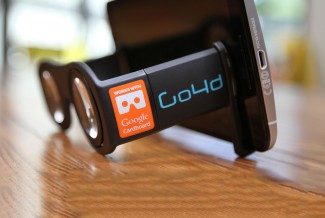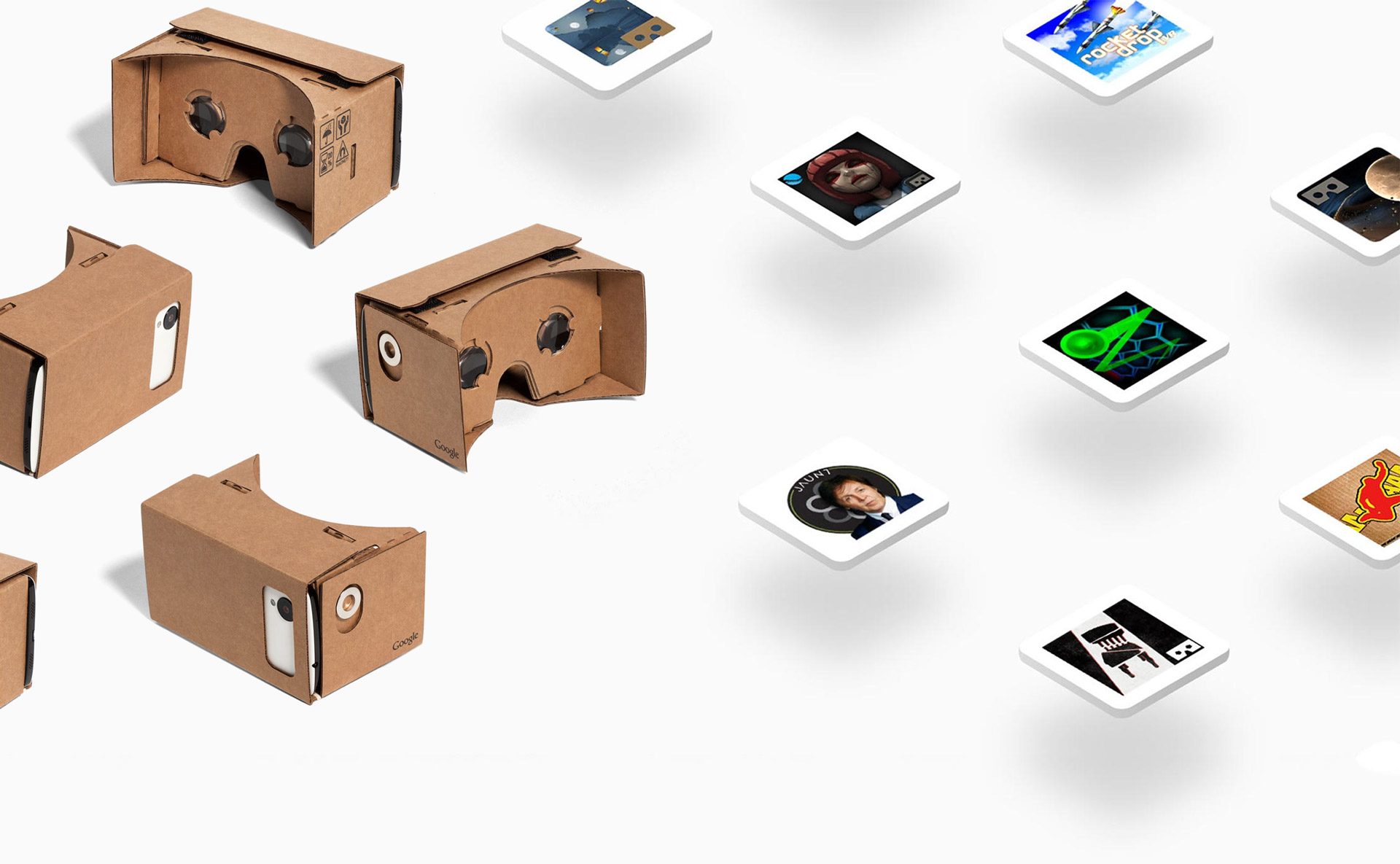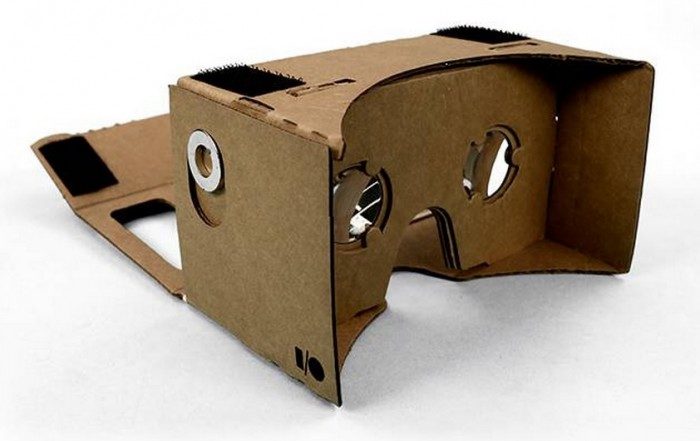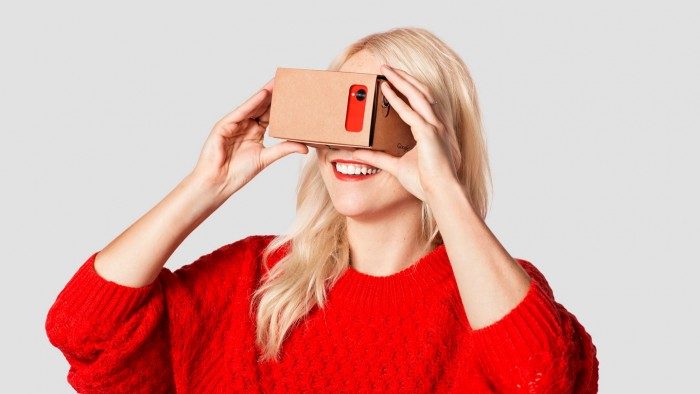While the initial uptick of Google’s ‘Cardboard’ VR initiative may have exceeded their expectations, the company is now taking a very active approach to guiding the project into the future. The next step for Cardboard, which we expect to hear more about at this week’s I/O 2015 developer conference, may not actually be made of cardboard this time around.
It’s hard to believe that it was only one year ago that Google revealed Cardboard, a low-cost VR smartphone adapter and developer toolkit that sought to make it easy and inexpensive for Android developers to begin exploring virtual reality on the mobile platform. Although it started out as a “20% time” project (essentially a pet project by some employees), the initiative has grown significant legs. At last official count (back in December), more than 500,000 Cardboard viewers had been dished out, while the official Cardboard app has somewhere between 1 million and 5 million installs.
To that end, Google now has a dedicated virtual reality team that’s “bigger than you might expect,” says Clay Bavor, Vice President of Product Management at Google, now leading VR and Apps.
We’ve seen at least five or so VR specific full time job postings from Google over the last year (with two currently vacant); the company also recently acquired VR game devs Skillman & Hackett along with positional audio tech company Thrive Audio, specifically to strengthen Google’s VR efforts.
Clay tells me that Google is “working on things not made out of cardboard,” hinting that the next iteration of the company’s VR smartphone adapters may be heading toward a consumer-level of fit and finish. “That’s not at all where our ambitions end,” he said about the Cardboard headset itself.
After Cardboard’s announcement at I/O 2014, one of the project’s team members said of the headset, “This is just a placeholder.” It was said that the viewer was intended to be a super low cost way of getting a taste of VR into the hands of developers and enthusiasts. And in that regard the project seems to have been an overwhelming success with hundreds of VR apps that have made their way into the Google Play store.
At the end of this week, Google hosts their annual developer conference, I/O 2015, where we expect to hear more about the company’s latest plans for Cardboard. Several sessions relating to virtual reality are on the schedule, including ‘Make Believe‘ and ‘Designing for virtual reality‘.
 In an effort to continue to refine the company’s fledgling VR platform, Google announced the ‘Works with Google Cardboard’ program last month, enabling Android VR apps to adapt automatically to the myriad of third-party Cardboard viewers, each with their own lens characteristics.
In an effort to continue to refine the company’s fledgling VR platform, Google announced the ‘Works with Google Cardboard’ program last month, enabling Android VR apps to adapt automatically to the myriad of third-party Cardboard viewers, each with their own lens characteristics.
According to the Australian Financial Review, Brian Blau of research firm Gartner predicts that Google will launch “a new Android-based platform that can be used for head-mounted display hardware running immersive applications” this week at I/O 2015.
Our hope for such an announcement would be a heavy emphasis on improving performance. Although Cardboard is a highly accessible means of entry to VR, there’s a significant gap between VR smartphone adapters and a genuine mobile VR headset like Samsung’s Gear VR which has additional sensors and controls which provide a much better VR experience.
When I put the notion to Bavor of improving Cardboard performance via headsets with dedicated sensors, he said that we may not see this for some time to come.
“Cardboard has been all about inexpensive and easy fun. I don’t think that adding sensors and complexity is in the cards right now,” he told me. “But of course we have the technical expertise to make this happen,” hinting that we could see something further down the road.
Although Cardboard headsets with dedicated sensors may not be in the foreseeable future, there’s still much Google can do to improve the ecosystem in the near term through software, by both continuing to define best practices for developers and improving the end-user experience, as they’re doing now with the ‘Made with Google Cardboard’ program.
While Google is focusing energy largely on Android and Cardboard, Bavor says that the company will likely play on other platforms as well. Google has already created a Google Earth experience for Steam VR and the HTC Vive which allows users to explore 3D satellite imagery as though they’re a giant atop a tiny planet.
This is good news for Tilt Brush, developed by Skillman & Hackett, one of the most talked about VR experiences shown at the HTC Vive reveal. Google recently acquired the company, but Bavor said that they wouldn’t quash the Tilt Brush project on the Vive and that it might even see more development support now that the developers are working under Google’s VR team.
Google I/O 2015 takes place this week in San Francisco on May 28th and 29th; we’ll be bringing you the most important VR news from the conference, stay tuned.









